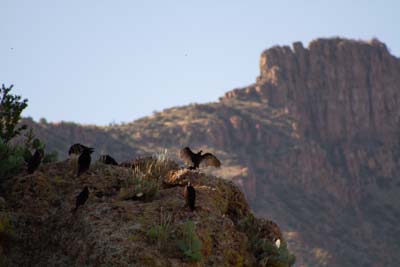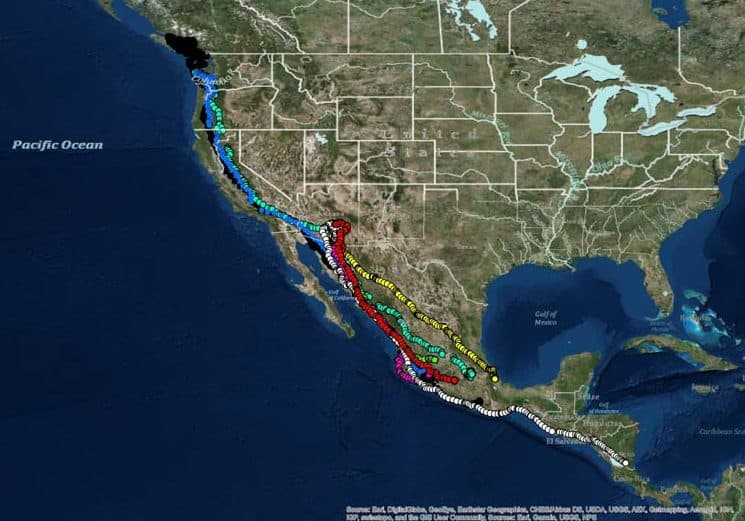Jean-Francois Therrien, Senior Scientist and Graduate Study Director, Hawk Mountain Sanctuary
Hawk Mountain Sanctuary, the world’s oldest and largest member-based raptor conservation organization, has been providing leadership to the raptor conservation community since its founding in 1934. Throughout its history, the Sanctuary’s guiding principle has been that the “time to protect a species is while it is still common.” Within this context, we have been studying the movement ecology as well as survival and reproductive rates of Turkey Vultures (Cathartes aura), the most widely distributed and most abundant of all obligate scavenging birds of prey, across its impressive distribution range. The species, which occurs only in the New World, can be seen as far north as southern Canada and as far south as southernmost mainland South America. Turkey Vultures are considered “partial migrants,” in that populations from northern North American sometimes, but not always, migrate, whereas most tropical populations do not migrate.

Since 2013, in collaboration with the Sonoran Joint Venture, we have expanded our network of tracked individuals to include more than 20 vultures tagged in Arizona. The extent of migration for the species in the Sonoran Desert is of particular interest because the region sees a mix of year-round residents sharing the landscape with breeders, which migrate south during winter, as well as an influx of birds breeding under higher latitudes, which actually settle in Arizona during winter. Individual vultures tracked from Arizona have high site fidelity, meaning they tend to return to the same breeding and wintering areas annually.
From our work conducted so far in Arizona, we have witnessed amazing variation in migratory behavior among birds trapped and tagged at the same site. Indeed, the huge winter distribution range, observed with birds settling across Mexico all the way through Panama, reminds us how broadly the Arizonan population occurs over the course of a year. Tracked vultures from Arizona travel between zero to more than 5000 km each spring and autumn between their breeding and wintering grounds. Individual migrants return to the same wintering areas in subsequent winters, thereby exhibiting “migration connectivity” on an individual, but not population, basis. The speed of travel also differs tremendously among birds. We are now wondering if age class affects this, i.e. adults moving faster and showing more direct flight lines than juveniles. In spring during return migration, vultures migrate faster. They spend less time on migration, and fewer days at stopover sites than during outbound migrations in autumn. We also witnessed some recent unfortunate events: a bird likely shot and others likely hit by cars. By learning how, where, and why these birds die, we will be better prepared to protect them.

In addition to tracking individual birds, we are conducting seasonal roadside surveys and behavioral observations of vultures on the breeding and wintering grounds in and north of Arizona, as well as on their wintering grounds in Central and South America. Overall, Turkey Vultures demonstrate some of the most efficient and flexible migratory movements of any bird. Because of this, they serve as excellent models for assessing the potential impacts of global change on avian-migration systems. There is thus a pressing need to assess the vital rates (survival and reproduction), as well as the complex movements of these birds to understand the factors that affect their distributions and abundances.
Hawk Mountain’s work on vultures in Arizona typifies the Sanctuary’s approach to raptor conservation. Aimed at better understanding the movement ecology of this species, our work will help local, regional, national, and international conservation organizations better protect this species while they are still common.
